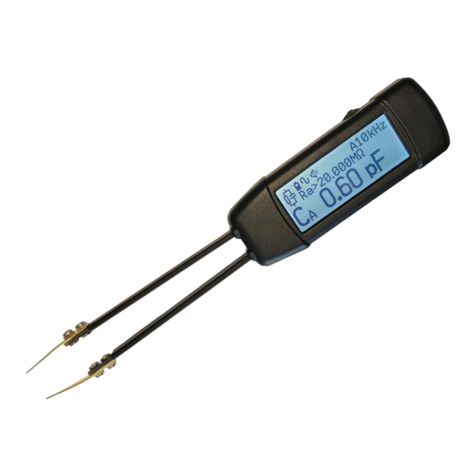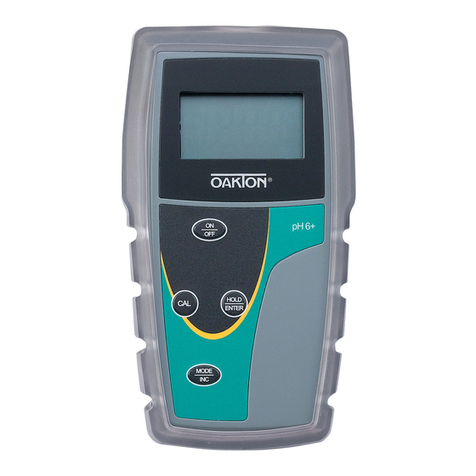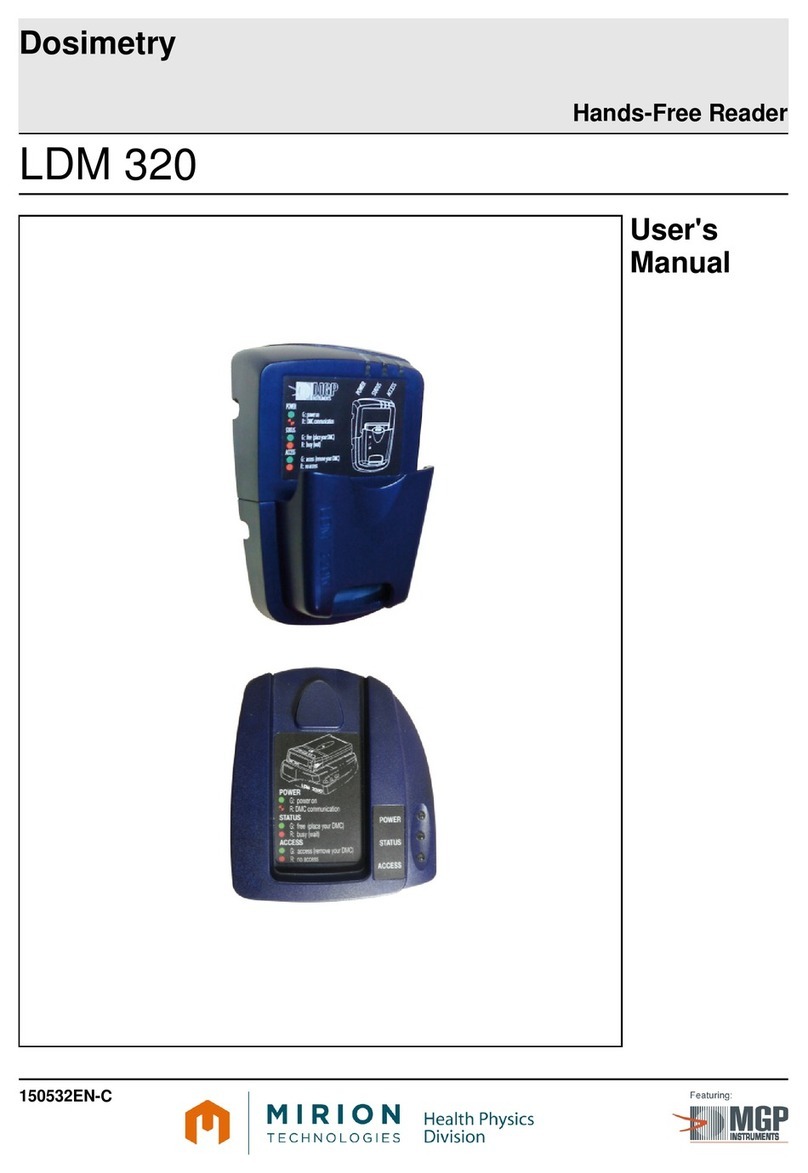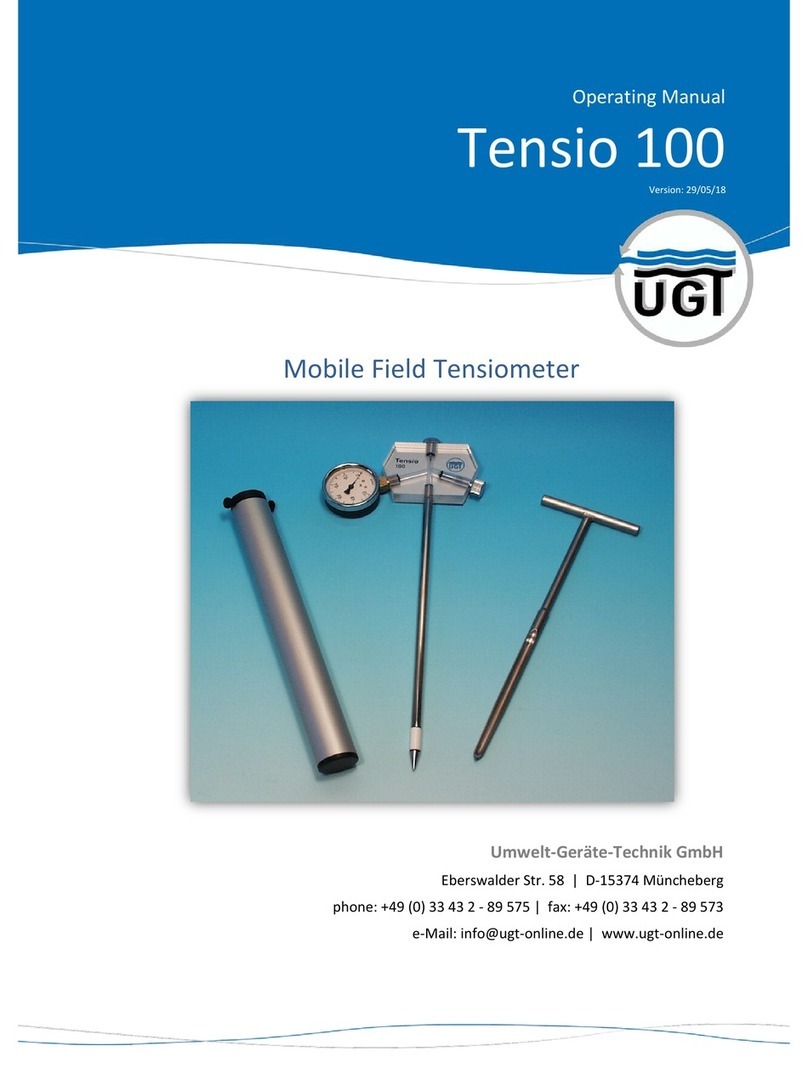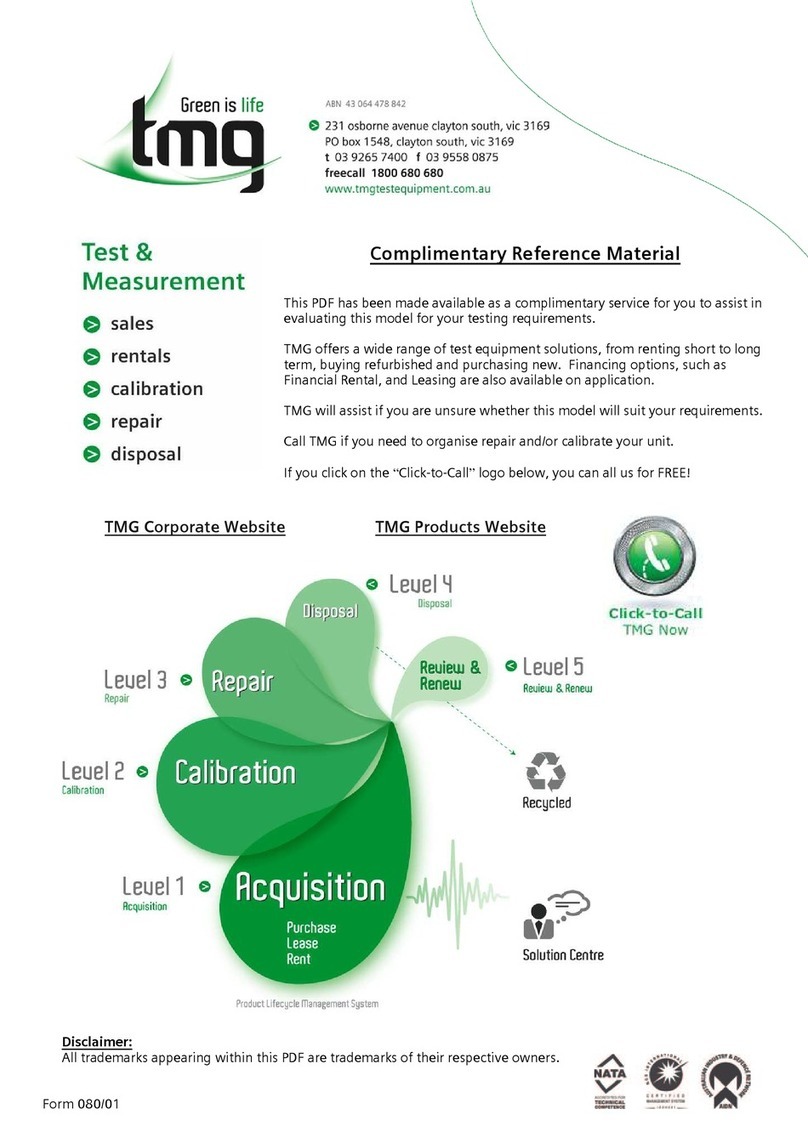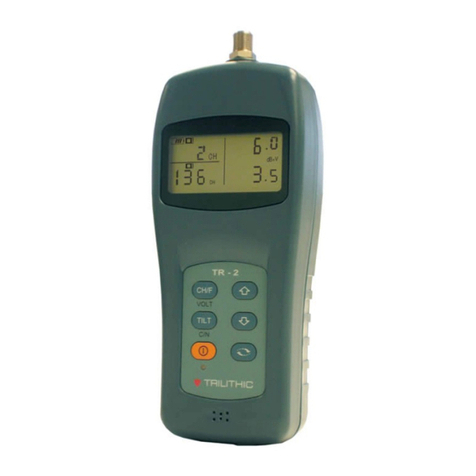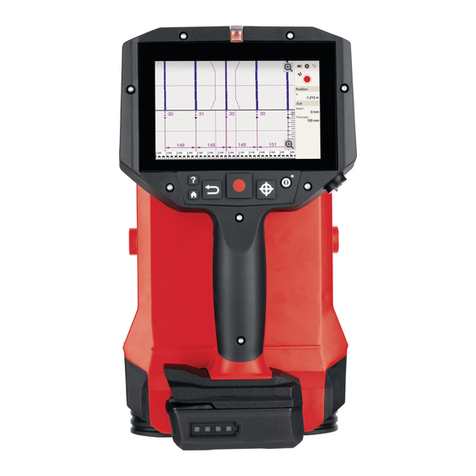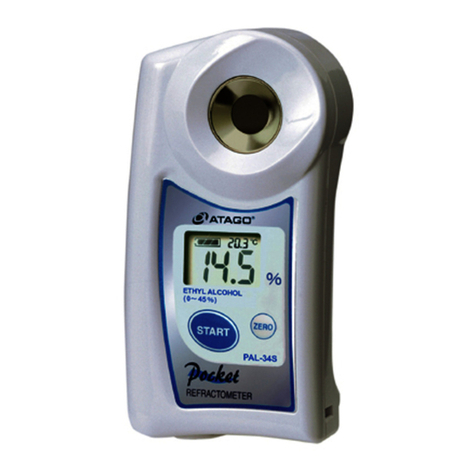Siborg ST-1 User manual

SREZ
EE
WT
TR
A
M
S
1-
TS
l
e
d
o
M
launaM s’resU
0.1 noisreV
g
nidne
P tnet
aP

3
2
e
c
i
toN
ton
s
i
tub
,
e
t
a
ru
c
c
a
e
b
ot
d
e
v
e
i
l
e
b
s
i
tn
e
mu
cod
s
i
h
t
fo
s
tn
etno
c
eh
T
n
iht
i
w
d
en
i
atno
c
no
i
t
am
rofn
i
eh
T
.no
i
t
a
r
op
ro
C
at
l
e
c
x
E
yb
d
eetn
a
r
aug
-
i
rt
s
id
s
t
i
d
n
a
no
i
t
arop
r
o
C
a
t
l
e
c
x
E
dn
a
em
i
t
yn
a
t
a
d
egn
ah
c
eb
y
a
m
n
i
s
rorr
e
ro
sno
i
s
s
i
mo
rof
yt
i
l
ib
i
snop
s
e
r
yn
a
emu
s
s
a
ton od
s
rotub
.
tn
e
mucod
s
i
h
t
N
O
I
TA
M
R
O
F
N
I
YTE
F
A
S
sgnin
raW
ro
f
koo
L
.gn
isu
e
r
o
f
eb
e
s
a
c
sre
z
ee
w
T
tram
S
eht
t
cepsn
I
•
t
i
f
i
e
c
i
v
ed
eh
t
esu
ton
o
D
.
e
g
am
ad
yn
a
dna
s
k
c
ar
c
.d
e
g
am
ad
eb
ot
sra
eppa
.
yl
l
a
m
r
o
n
ba
set
ar
e
po
t
i
f
i
e
ci
v
e
d
eht
esu
ton
o
D
•
t
i
uc
r
i
c
-
ni
s
t
n
eno
p
m
o
c
yna
eru
s
aem
ot
tpm
ett
a
ton
o
D
•
.re
wop
eht
r
ed
nu
si
t
iu
cr
i
c
ruo
y
n
e
h
w
sno
itu
aC
eht
ot
ro
sre
z
e
e
w
T
tramS
ot
e
g
a
mad
elbis
so
p
di
o
va
o
T
:seni
l
ed
iu
g
eseht
wollof ,tset
r
e
dnu
tnempiuqe
egatlo
v-h
g
ih
l
l
a
egrah
cs
id
dna
r
e
wop
t
iu
cri
c
tc
enn
o
csi
D
•
ro
,
e
cn
at
c
u
dni
,e
cnatsiser
gnitset
erof
eb
sr
o
t
i
cap
ac
.e
cna
t
i
cap
ac
ni n
e
h
w
Vm
0
08
naht
erom
s
egatlo
v
e
r
u
s
aem
ton o
D
•
.
e
dom
citamotua
-erusa
e
m ruo
y
rof sno
it
cnuf
dna
sl
a
nimre
t
r
e
porp
es
U
•
.
s
tn
em
.sr
e
z
ee
w
T
tr
amS
r
e
w
o
p
ot
s
e
ir
e
ttab
t
ce
r
ro
c
e
h
t
es
U
•
ST
N
E
T
NO
C
F
O
E
L
B
AT
E
CI
T
O
N2
. .
.
. .
.
.
.
.
. .
. .
.
.
.
.
. .
.
.
.
.
.
. .
. .
.
.
.
.
. .
.
NO
IT
AM
R
O
F
N
I
Y
T
E
FAS 2
. .
. .
.
.
.
.
. .
. .
.
.
.
.
.
. .
. .
.
2.
.
.
.
. .
. .
.
.
. .
. .
.
.
.
.
.
. .
. .
. .
. .
. .
.
.
.
.
.
s
g
n
i
n
r
aW
2
.
. .
. .
.
.
.
.
.
. .
. .
. .
. .
. .
.
.
.
.
.
. .
. .
. .
. .
.
s
n
o
it
u
aC
2. .
.
.
.
.
. .
.
. .
. .
. .
. .
.
.
.
.
. .
. .
.
. .
. .
. . sro
t
u
b
i
r
ts
iD
3.
. .
. .
.
.
.
.
. .
. .
.
. .
. .
. .
.
.
.
.
. .
. .
st
n
et
n
o
C
fo
e
l
b
a
T
4. .
.
.
.
.
. .
.
. .
. .
. .
. .
.
.
.
.
. .
. .
.
. .
. .
. .
.
.
we
iv
r
ev
O
EC
N
E
RE
F
ER KC
I
U
Q5.
. .
. .
. .
. .
. .
. .
. .
.
. .
. .
. .
. .
. .
5.
.
. .
. .
. .
. .
. .
. .
. .
. .
.
. .
. .
. .
. .
. .
. .
. ae
r
A y
a
l
p
s
iD
5. .
. .
. .
.
. .
. .
. .
. .
. .
. .
. .
.
. .
. .
. .
.
y
a
l
p
s
i
D yram
i
rP
5. .
.
. .
. .
. .
. .
. .
. .
. .
. .
.
. .
. .
. .
.
y
a
l
p
s
i
D yra
d
n
o
c
eS
6.
. .
. .
. .
. .
. .
. .
. .
.
. .
. .
. .
. .
. .
n
o
tt
u
B
l
a
i
D
g
oJ
e
hT
6
. .
. .
. .
. .
. .
.
. .
. .
. .
. .
. .
. .
. .
. .
.
. .
.
n
ott
u
B
t
e
s
e
R
6.
. .
. .
.
. .
. .
. .
. .
. .
. .
. .
.
. .
. .
. .
. .
.
d
n
u
or
G
la
u
triV
6.
. .
. .
. .
.
. .
. .
. .
. .
. .
. .
. .
.
. .
. .
. .
. .
.
hc
t
iwS
e
d
i
lS
RE
Z
E
E
WT
TRAMS EHT GN
I
SU 7.
.
.
.
.
. .
. .
.
.
.
.
. .
. .
7
. .
. .
. .
.
.
.
. .
. .
.
.
.
.
. .
.
N
O
sr
e
z
e
ew
T
t
r
a
m
S
g
n
i
nruT
7.
.
.
.
.
. .
. .
. .
.
. .
. .
.
.
.
.
. .
. .
. f
f
O
rew
o
P
c
i
t
a
m
o
t
uA
7
. .
. .
.
.
.
.
. .
. .
.
.
.
. .
. .
.
.
.
.
. .
. .
. .
.
. .
. .
.
.
y
ret
t
a
B
7
. .
.
. .
. .
.
.
.
.
. .
. .
. .
.
. .
. .
.
.
n
o
it
a
c
i
d
n
I yret
t
a
B
w
o
L
ERUT
C
U
RTS
UNEM 8.
.
. .
.
. .
. .
. .
. .
.
.
.
.
. .
. .
.
.
.
.
8.
.
. . .
.
.
.
.
.
.
.
. . g
n
i
t
t
e
S
t
l
u
a
fe
D
e
h
t
m
o
r
f
g
n
ign
a
h
C
0
1
. .
.
.
.
. .
. .
.
.
.
.
. .
. .
.
.
s
t
l
u
afe
D
yr
otcaF
o
t
g
n
i
n
r
u
t
eR
0
1
.
.
. .
. .
.
.
.
.
. .
.
. .
.
.
. .
. .
.
.
.
.
s
n
o
i
t
p
O
p
ut
eS gni
v
a
S
S
T
NE
M
ER
USA
E
M1
1
.
. .
. .
. .
. .
. .
.
.
. .
.
. .
. .
. .
. .
. .
.
EC
N
AN
ET
NIAM 4
1
.
. .
. .
. .
. .
.
.
.
. .
. .
. .
. .
. .
. .
. .
.
. .
4
1
.
. .
.
. .
.
.
.
.
. .
. .
. .
. .
.
. .
.
.
.
.
ec
n
a
netnia
M
lareneG
4
1
. .
. .
.
.
.
. .
. .
. .
. .
. .
. .
.
.
.
. . s
e
i
ret
t
aB eht
gni
c
al
peR
G
N
IT
OO
HSEL
BU
O
RT 4
1
.
.
.
.
. .
. .
.
.
.
. .
. .
.
.
.
.
. .
. .
.
SN
O
ITACIFICEPS 4
1
.
.
.
.
.
. .
. .
.
. .
. .
. .
. .
. .
. .
.
.
.
.
. .
5
1
.
. .
. .
.
.
.
. .
. .
. .
. .
. .
.
.
.
.
.
.
. . .
s
noi
tacifi
c
ep
S
ci
s
aB
5
1
.
. .
. .
. .
. .
. .
.
.
.
.
. .
snoit
a
cifice
p
S ycaruccA d
eli
at
e
D
5
1
. .
. .
. .
.
.
.
.
. .
. .
.
. .
. .
. .
. . .
.
.
.
.
.
. . . . e
c
natsi
s
eR
5
1
. .
. .
. .
. .
.
. .
.
.
. .
. .
. . .
.
.
.
.
.
. . .
. .
. .
ecnaticap
a
C
5
1
.
. .
. .
. .
. .
.
.
.
.
. . .
. .
. .
. . .
.
.
.
.
.
.
.
. . . ecnatcudnI
5
1
.
. .
. .
.
.
.
.
.
.
. . .
. .
. .
. .
.
.
.
.
.
.
.
.
yr
a
mmu
S
eru
t
aeF
t
a
su
tc
atnoc
es
a
elp
,no
it
a
mrofni
reht
ruf
roF
siborg.com
.
www

45
QUICK REFERENCE
Display Area
Smart Tweezers has two display modes, Primary and
Secondary.
Primary Display
The Primary Display is located in the middle of the display
and is the larger of the two displays available. It shows
the present reading. For most functions the primary
display shows 5 digits.
If OUT OF RANGE is displayed an overload condition is
present.
Secondary Display
The Secondary Display is located at the top of the display
and is the smaller of the two displays. It shows the
present reading of additional parameters, or measurement
conditions when the primary display shows some other
feature (e.g. L, C).
When multiple features are present, secondary display
shows one of the values. For example, ESR value can
appear in the secondary display while capacitor value
appears in the primary display.
Bar Graph
The bar graph provides an analog indication of the meas-
ured input and is located at the bottom of the display.
OVERVIEW
Smart Tweezers is an R-L-C meter in a set of tweezers.
Smart Tweezers is designed for production line compo-
nent evaluation, on board impedance testing, and SMD
components sorting. With automatic recognition of
measurement mode (R, L and C) Smart Tweezers is ideal
for identifying surface mounted devices.
Figure 1.
Smart Tweezers has a unique mechanical and electronic
design that incorporates a built-in direct precision SMD
probe designed for component evaluation on the pro-
duction line, PCB debugging, component impedance
testing and sorting SMD components.
The integrated SMD probe and graphic display, combined
with automatic recognition of measurement modes (R, C,
and L) and the range of measurement, allows the opera-
tor focus on the component under test. As a result test-
ing, sorting and evaluation of components becomes
more efficient and cost effective.
Figure 2.
Jog Dial Button Reset
Virtual Ground
Connector
Slide switch for extended
Voltage measurements
Secondary Display
Primary Display Bar Graph

The Jog Dial Button
The Jog Dial button (Figure. 3) is used to choose the
selected function or to change a setting.
To change the menu displayed press and move the
button left or right.
To select or execute a function press the button down
(Figure 3).
Reset Button
The reset button resets the unit. This may need to be
pressed after changing the batteries.
Virtual Ground
Use the Virtual Ground connector when performing
in-circuit measurements to eliminate the influence of
grounded components. Connect this point to the circuit
Ground.
Important: Do NOT use the virtual ground when the
tested circuit is under power.
Slide Switch
The slide switch can optionally be used to measure DC
voltage up to 8V by enabling a 1/10 voltage divider.
Important: The slide switch should be turned off once
the voltage measurement is completed. If it is not turned
off incorrect results in automatic mode may occur. The
slide switch is not an automatic control option.
67
USING SMART TWEEZERS
Turning Smart Tweezers ON
To turn the Smart Tweezers ON, press the jog dial button
to any position.
The sign in the low left corner of the display indicates
that device is ON and ready to perform measurements.
A, R, L or Cindicate auto, resistance, inductance and
capacitance respectively.
Automatic Power Off
The unit will automatically power off, the display goes
blank and the device goes into a “sleep” mode if no
component has been touched or button pressed for
approximately 30 seconds. You can set power off interval
by change TIMEOUT setting in DISPLAY menu.
Pressing the Jog Dial button turns Smart Tweezers back
on and the device then returns to the display for the
previously selected function.
Automatic power off does not occur when the device is
in VOLTAGE, TRACE or MENU mode.
Battery
Smart Tweezers uses three 1.5V alkaline or air zinc
“button” type batteries, size 11.2 x 5.6mm (Type 357A
or LR44).
Low Battery Indication
The Low Battery message and battery icon in the display
is the notification that the batteries are low and should
be replaced (Fig. 5). The warning appears when the
batteries are about 90% depleted. The unit is still
operational for a short time, however the batteries
should be replaced as soon as possible.
Figure 3.
Figure 4.
Figure 5.
10 kHz

89
SOUND Menu
Use the SOUND setting to turn the beeper ON or OFF
as shown in Fig. 8.
DISPLAY orientation, contrast, timeout setting
Use the DISPLAY setting to change the display orienta-
tion, the contrast and the timeout as shown in Fig. 9.
ON
OFF
SOUNDSYSTEMMAIN EXIT
LEFT
RIGHT
DISPLAYSYSTEMMAIN EXIT
MENU STRUCTURE
From the main menu it is possible to set the Smart
Tweezers back to their default setting (AUTOSET) or
go to SYSTEM or MEASURE menus (Fig. 6).
Changing from the Default Setting
The user can change the default operating configuration
of Smart Tweezers by changing the options. All setup
options affect general operations and are active in all
functions.
Smart Tweezers factory setting
Frequency: AUTO range
Meter automatically selects frequency
for the best accuracy.
Measurement: AUTO range
Meter automatically selects
R, C or L measurement.
Period: 1s
Sound: OFF
Display: RIGHT
Timeout: 30 seconds
To enter SETUP mode turn on the device and go to
MAIN menu.
SYSTEM Setting Menu
Use SYSTEM menu to set up system parameters for all
functions (Fig. 7).
Figure 7.
Figure 8.
Figure 9.
Figure 6.
CONTR
CONTRAST
DISPLAYSYSTEMMAIN EXIT
TIMEOUT
TIMEOUT
DISPLAYSYSTEMMAIN EXIT
Actual Setting
Selected Item

10 11
MEASUREMENTS
The default setting is to perform fully automatic auto
range measurement for resistance, inductance and
capacitance.
Most measurement functions also have a manual mode,
which can be selected by using the jog dial button. Use
the manual setting when you need to measure a specific
parameter or need better accuracy.
MEASUREMENT setting menu
To measure specific components or to change measurement
parameters, use Measure menu as shown in (Fig. 11).
Measuring Resistance, Inductance
or Capacitance
For automatic measurement use AUTO setting (default).
To measure only one parameter – resistance, inductance
or capacitance set Smart Tweezers as shown in Fig. 12.
Note: When measuring small resistance, capacitance
or inductance, make sure that terminals are clean.
AUTO
R
L
C
MODEMEASUREMAIN EXIT
Setting testing PERIOD
Use PERIOD to change the reading period setting as
shown in Fig. 10.
Returning to Factory Defaults
Smart Tweezers comes with the setup options preset at
the factory.
To return to these settings:
1. Go to the MAIN menu.
2. Set AUTOSET.
3. Set EXIT and all factory settings are restored.
Saving Setup Options
Choose EXIT to save the last option from the current
menu. This option is marked by the arrow symbol.
Choose EXIT to exit from the main menu.
2 SEC
1 SEC
1/2 SEC
1/4 SEC
PERIODSYSTEMMAIN EXIT
Figure 10.
Figure 11.
Figure 12.

12 13
Use AUTO mode (default) to measure DC Voltage from
100uV to 800mV.
Use TRACE mode if you want to see the oscilloscope like
picture of Voltage as shown in (Fig. 16).
To change speed turn jog dial button LEFT or RIGHT. To
EXIT press the job dial button.
Adjusting Voltage Offset
To adjust voltage offset:
1. Connect the probes to each other and choose
CALIBER mode.
2. Press EXIT to exit calibration mode.
3. Disconnect probes.
Use BATTERY mode to measure current battery voltage.
Press the jog dial button to exit.
Test Frequency Setting
For automatic measurement use AUTO setting (default).
Use fixed test frequency for specific measurements, such
as very small or very large capacitance (less than 50pf or
more than 100uF) or inductance.
To fix test frequency set Smart Tweezers as shown in Fig. 13.
Measuring Voltage
Use AUTO mode (default) to measure DC Voltage from
100uV to 800mV (up to 8V with slide switch manual set-
ting). To measure voltages configure Smart Tweezers as
shown in Fig. 14.
AUTO
10 KHz
1 KHz
0.1 KHz
FREQMEASUREMAIN EXIT
AUTO
TRACE
CALIBR
BATTERY
VOLTAGEMEASUREMAIN EXIT
Figure 13.
Figure 15.
Figure 16.
Figure 17.
Figure 14.

14 15
Electromagnetic Susceptibility and Emission:
Compatibility (EMC): FCC 15 part B
Size: 14.0 x 2.5 x 3.0 cm (3.94 x 0.9 x 1.5 in)
Weight: 53 grams (0.11 lb)
Warranty: 1 year
Basic Specifications
Measured Parameters: C, L, R, ESR, Rs, Rp
Measuring Frequencies: 100 Hz, 1 kHz, 10 kHz
Measurement rate: 1 time per second, default
DC Voltage: 0 to 800 mV (Up to 8 V with optional
slide switch manual setting)
Resistance: 0.1 Ohm – 9 M Ohm
0.1 Ohm – 1 M Ohm
Resolution: 0.01 Ohm
Capacitance: 10 pF to 499 mF
Inductance: 1 uH to 999 mH
Battery life: minimum 120 hrs (Air-Zinc batteries)
Detailed Accuracy Specifications
Accuracy is specified at 18 °C to 28 °C (64 °F to 82 °F),
with relative humidity to 90 %.
Resistance
Range: 0.1 Ohm – 5 MOhm
Accuracy: 1 % in range 0.1 R – 1 M
2 % in range 1 M – 5 M
Resolution: 0.01 R in range 0 – 10 R
Test Frequency: 1 kHz
Capacitance
Range: 10 pF – 499 uF
Accuracy: 5 % in range 20 pF – 499 uF
Resolution: 0.5 pF in range 1 pF – 100 pF
Test Frequency: 1 kHz C > 1000 pF
10 kHz C < 1000 pF
100 Hz C > 1 uF
Inductance
Range: 1 uH – 1 H
Accuracy: 10 % in range 1 uH – 10 uH
5 % in range 10 uH – 100 uH
5 % in range 100 uH – 1 H
Resolution: 0.5 uH in range 1 uH – 100 uH
Test Frequency: 10 kHz L < 1 uH
1 k Hz L > 1 uH
100 Hz L > 1 mH
Feature Summary
Graphics Displays. Analog Bar Graph. Fully automatic
measurement of Inductance, Capacitance and Resistance.
Auto range: Meter automatically selects best range.
Trace Graph: Oscilloscope like display for voltage
measurement.
MAINTENANCE
General Maintenance
Dirt or moisture in the terminals can affect measurement
accuracy. Clean the terminals regularly. Do not use abra-
sives or solvents.
To clean the terminals:
1. Turn the device off.
2. Shake out any dirt that may be on the terminals.
3. Soak a new swab with alcohol. Work the swab around
each terminal.
Replacing the Batteries
Replace the batteries with three alkaline or air-zinc
batteries (LR44 or 375A type).
To replace the batteries:
1. Remove three screws with screwdriver TORX # 5 and
lift the cover.
2. Replace the batteries follow the “+” and “–“ sign.
3. Secure the cover.
4. Reset the device.
Troubleshooting
If there appears to be a malfunction during the operation
of the device, the following steps should be performed in
order to isolate the cause of the problem:
1. Check the battery.
2. Review the operating instructions for possible mistakes
in operating procedure.
CAUTION: Except for replacing the battery, repair of the
device should only be performed by an Authorized
Service Center or by qualified device service personnel.
SPECIFICATIONS
Physical Specifications
Operating Temperature: 0 °C to + 55 °C
Storage Temperature: 40 °C to + 60 °C
Relative Humidity: 0 % to 90 % (0 °C to 35 °C)
0 % to 70 % (35 °C to 55 °C)
Altitude Operating: 0 – 2000 meters
Storage: 10000 meters
Battery Type: 1.5 V LR44 (357A) Alkaline or Air zinc
Battery Life: 80 Hours typical with alkaline,
220 hours with air zinc battery

16
LABELLING & VERIFICATION
REQUIREMENTS
This device complies with Part 15 of the FCC Rules.
Operation is subject to the following two conditions:
1. this device may not cause harmful interference and
2. this device must accept any interference received,
including interference that may cause undesired operation.
Table of contents
Other Siborg Measuring Instrument manuals
Popular Measuring Instrument manuals by other brands
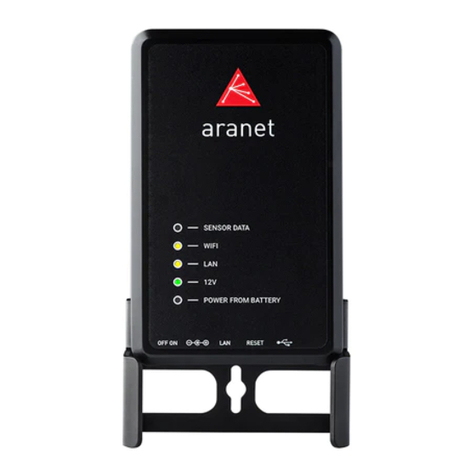
Aranet
Aranet PRO quick start guide
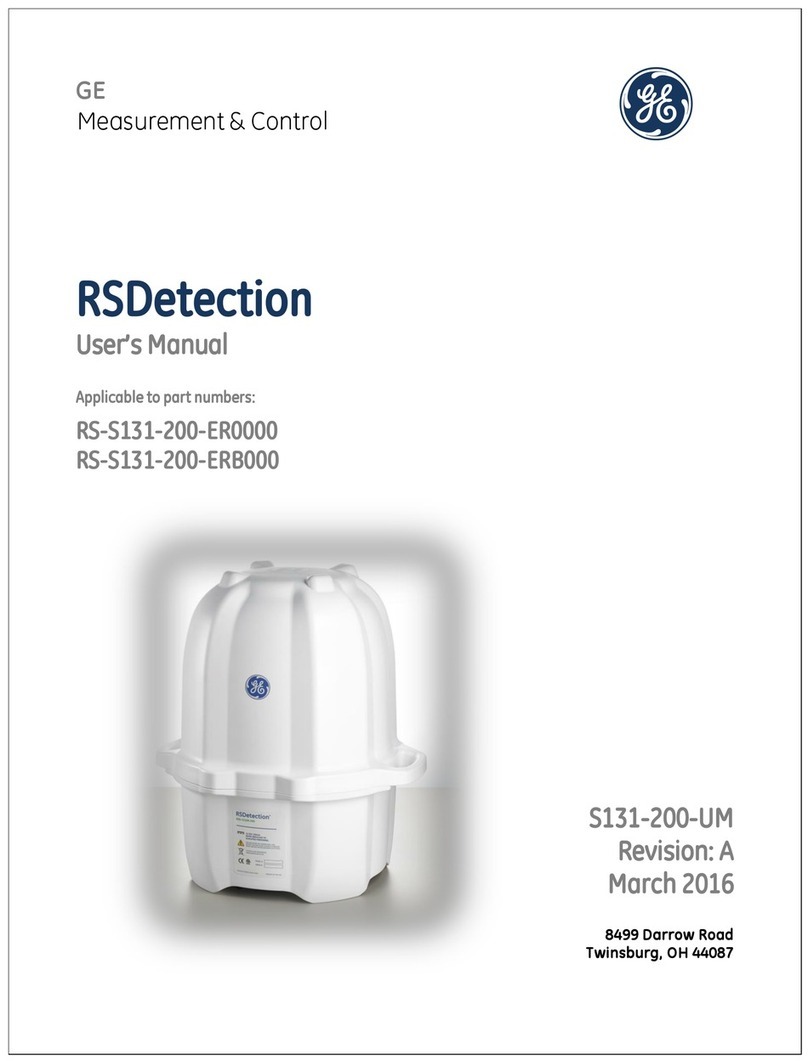
GE
GE RSDetection RS-S131-200-ER0000 user manual
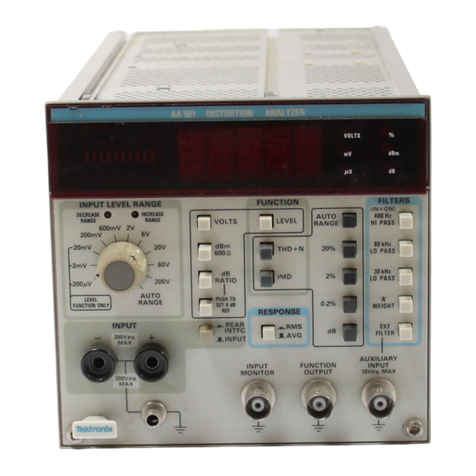
Tektronix
Tektronix AA5001 instruction manual
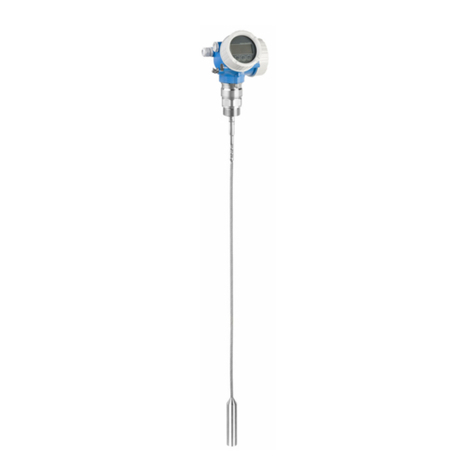
Endress+Hauser
Endress+Hauser PROFIBUS PA Levelflex FMP56 operating instructions
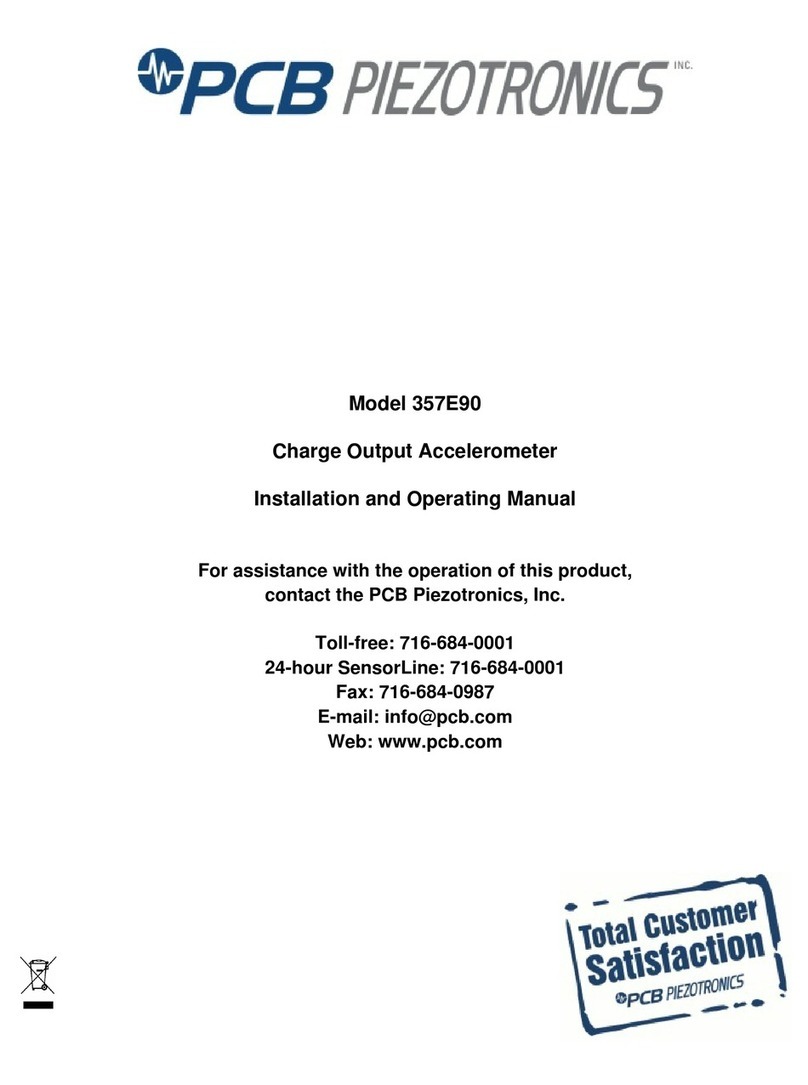
PCB Piezotronics
PCB Piezotronics 357E90 Installation and operating manual

scigiene
scigiene AW1 user manual


